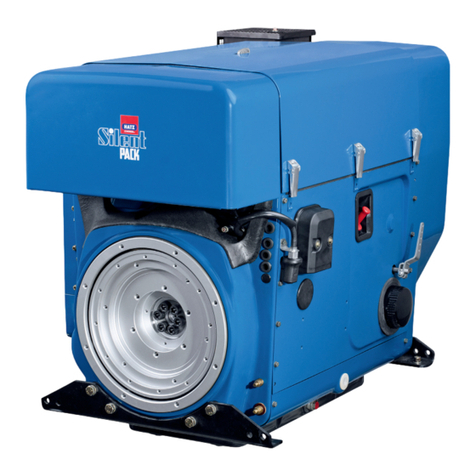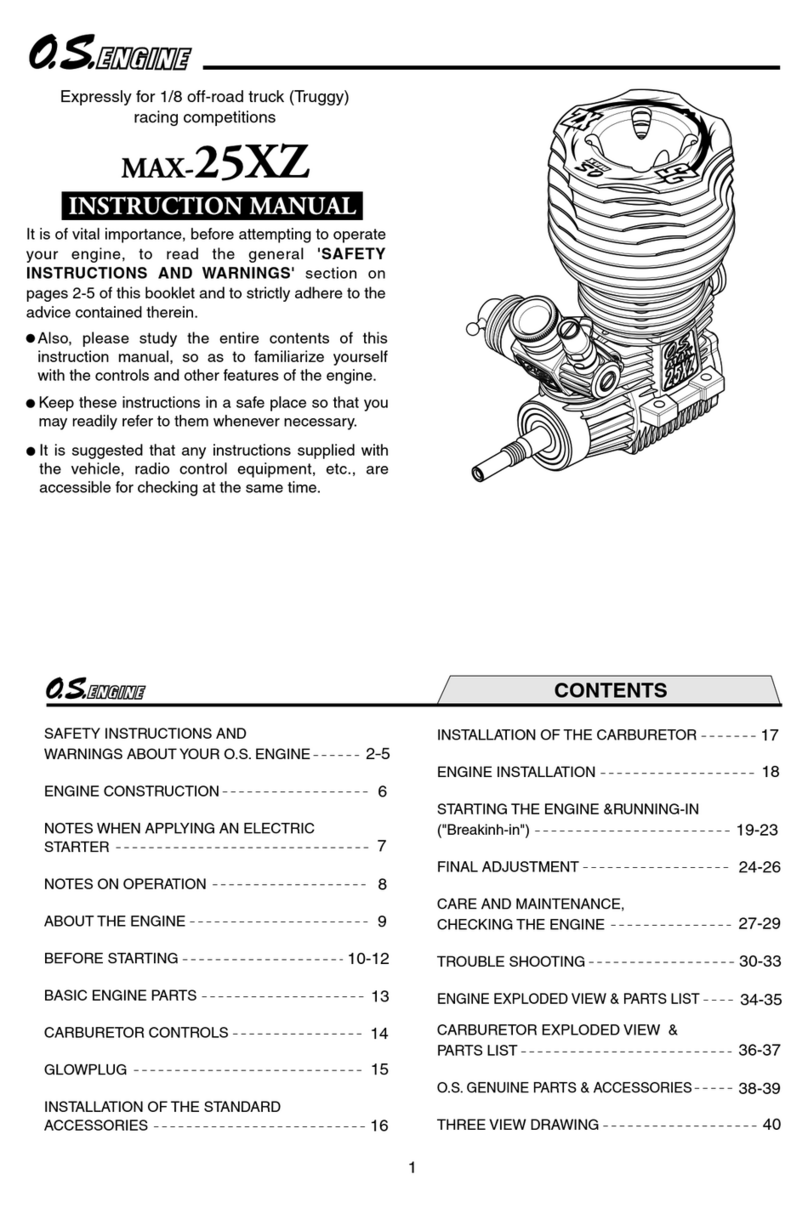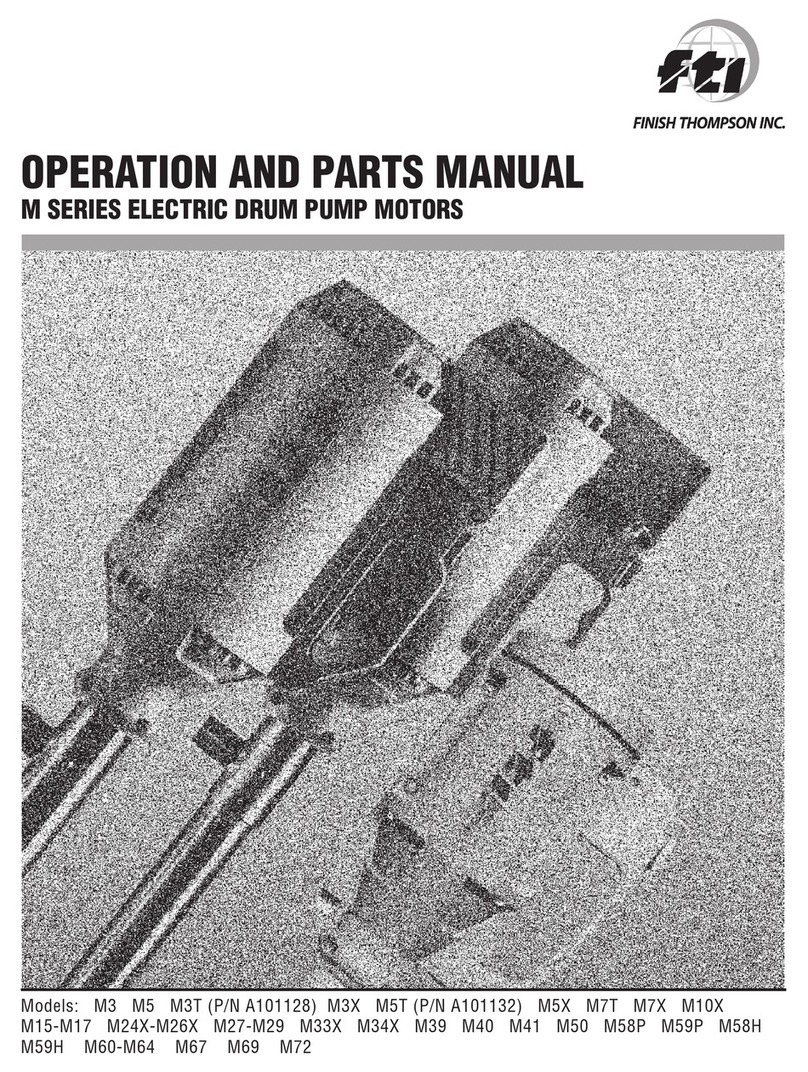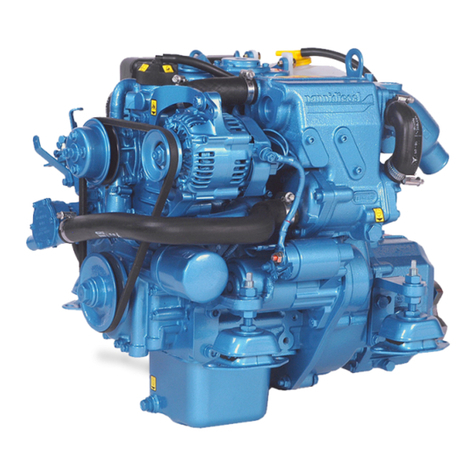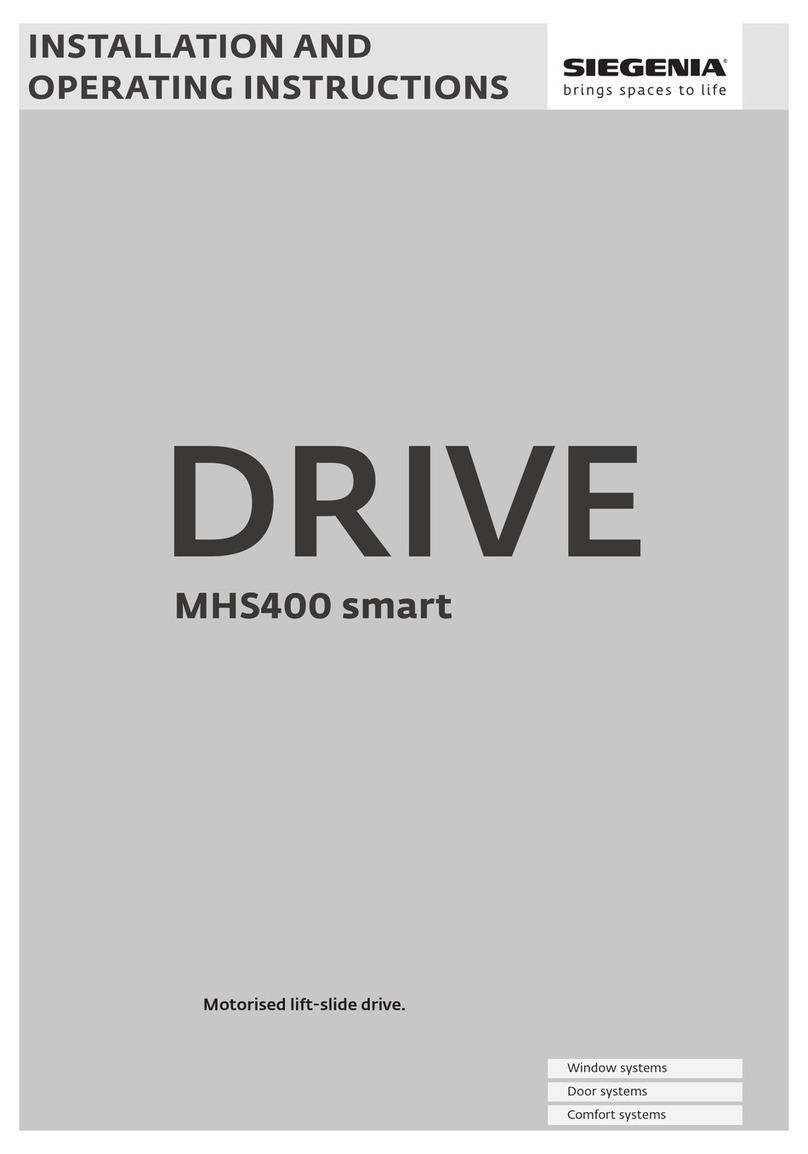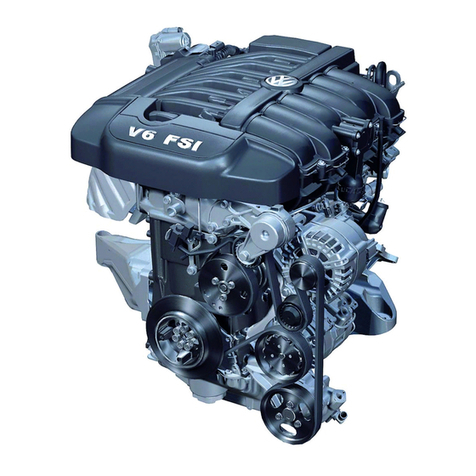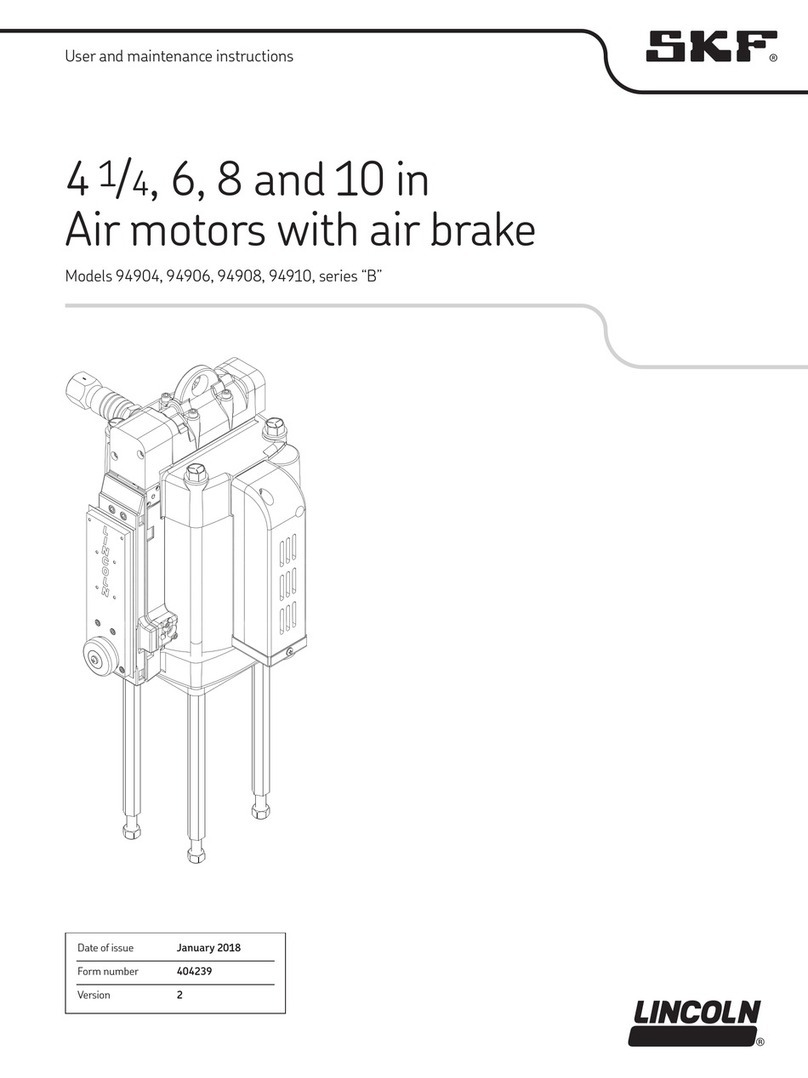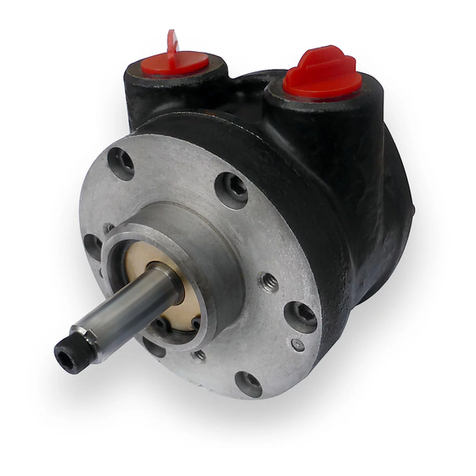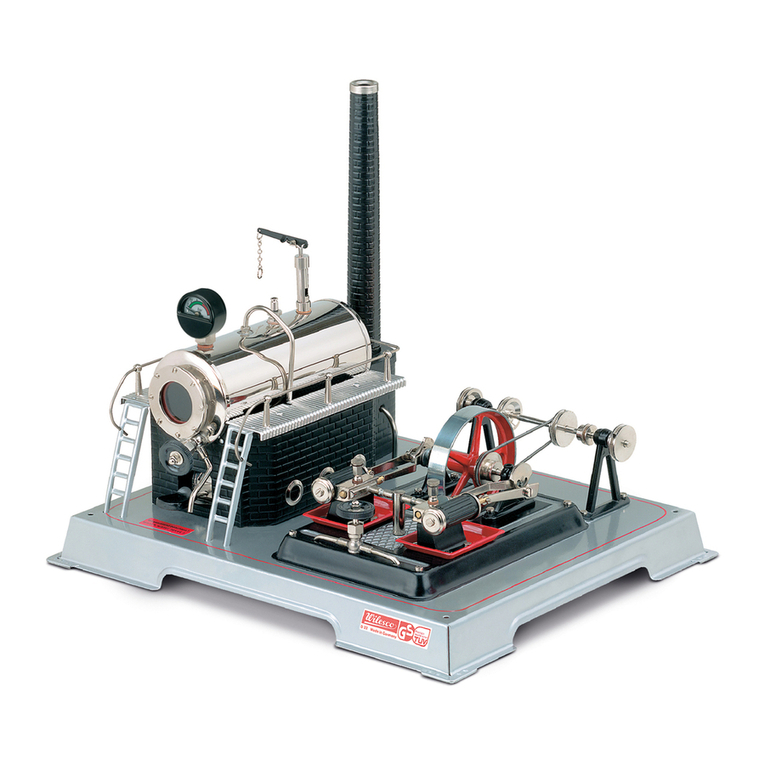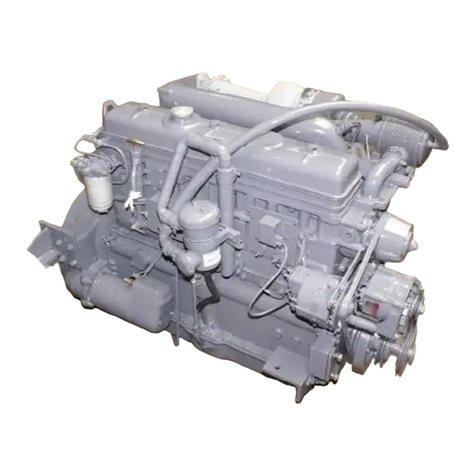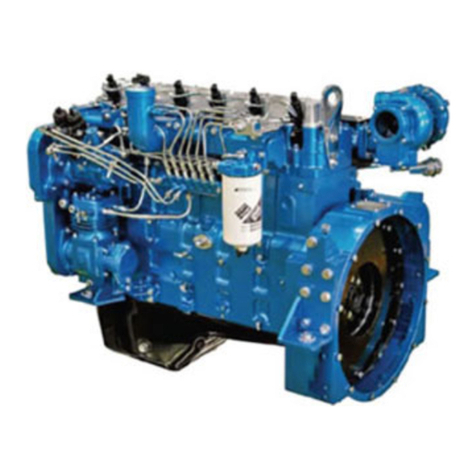GR GR6 Series User manual

MOTOR FOR SLIDING GATES
SERIE GR6 – 220V
SAFETY
Our compliments for your excellent choice. Your new
electromechanical gear motor has been produced according to a
high quality and a strict reliability, that's why it will assure you long-
lasting performances.
This booklet will offer you all the pieces of information you may need
to install your gear motor and to safeguard your safety.
However, the caution is unquestionably indispensable and
nothing is better than preventing accidents.
All our products have been made in conformity with the regulations
in force.
WARNING: any repair or adjustment of the working machinery is
strictly prohibited unless all the necessary precautions (electrical
supply disconnected and motor off) have been taken in order to
avoid possible accidents.
WARNING: The feeder line has to be protected for the max. current
in blocked rotor condition.
WARNING: Install the motor on gate who are in conformity with the
EN 12604
WARNING: Execute the measurement of the force produced by the
motor and take the measures expected by the EN 12445
WARNING: any repair must be carried out by qualified people.
All moving mechanisms must be provided with suitable protections.
WARNING: Keep the automatic controls out of the reach of
childrens. The controls must be installed at a minimum high of 1,5
mt. from the ground surface and out of the work of mobile parts.
WARNING: command pulses must be given from positions where
the gate is visible.
WARNING: use the transmitters only if you can see the gate.
WARNING: GR Srl is not responsible for possible damages or
injuries to people, objects or animals, caused by any unauthorised
modification of the product.
Keep scrupulously this booklet in a suitable place well known by all
the interested people.
In order to make the automation work efficiently; the gate to
automate must have the following characteristics:
- it must be balanced;
- it must oscillate fluently;
- you have to carry out the manual closing and opening the gate
without any effort;
- remember that the motorization has been planned in order to help
you use the gate. This means that it does not resolve the problems
caused by an inadequate installation or by a poor upkeep of the
gate.
SAFETY RULES
During the installation and the use of the automation, you have to
pay attention to the following safety rules:
- Security distance!
- Mechanism in movement!
- Do not install the automation in places with presence of
iniammable gasses!
- Electric shock!
- Use the gloves!
- Use glasses for welding!
- Keep the protection carter!
EQUIPMENT
In order to install the automation you have to provide yourself with
keys, screwdriver, metre, slope detector (water level), saw, drilling
machine and welding machine.
TECHNICAL DATA
DIMENSIONS
A = 80 = DISTANCE BETWEEN THE FIXATION HOLE OF THE
RACK AND THE SURFACE OF THE BASEMENT PLATE OF
THE MOTOR.
1 - GATE
2 - BASEMENT PLATE
B – POSITION OF BASEMENT PLATE WITH THE CORRECT
ORIENTATION OF THE HOLE FOR THE CABLES
CONFORMITY DECLARATION:
It’s in accordance with Machine Directive 39/89/CE and following
modify.
It’s in accordance with the following directive CE:
Electromagnetic compatibility Directive 89/336/CEE and
following modify.
Low tension Directive 73/23/CEE and following modify.
Have been applied the following harmonized norms:
EN292/1/2, EN 294, EN60335-1, UNI EN 12453, and what
applicable of the EN12445-2000.
GR6 220-230 Volt
Power supply 220-230 Vac
Current absorbed 1,5 Ampere
Capacitor 12,5
µ
Farad
Power absorbed 350 Watt
RPM 1400 rpm
Thermal protection 150°
Torque 20,5 Nm
Max. thrust 600 N
Wotking temperature -25+75°C
Lubrication Grease
Motor weight 6,3 – 7,5 Kg.
Max. wing weight 600 Kg.
Speed 10 m/ min.
Protection level IP55

POSITIONING OF BASEMENT PLATE
-Make a foundation pit in order that the foundation plate is
78 mm far from the GATE (not from the slide).
-Put the plate in the foundation pit (protect the inferior part
of the camping screws holes).
-In positioning the foundation pit, make sure that the plate
hole for passage of cables is in opposite side of the gate
(see photo).
-Make a foundation pit in order that the foundation plate is
78 mm far from the GATE (not from the slide).
-Put the plate in the foundation pit (protect the inferior part
of the camping screws holes).
-In positioning the foundation pit, make sure that the plate
hole for passage of cables is in opposite side of the gate
(see photo).
POSITIONING OF THE MOTOR
-Put the motor on the plate.
-Put 4 little shims between the motor and the plate to keep
provisionally the motor 1 mm higher.
-Unclamp the motor by using lever (B). (Turn the lever of
100°).
Leave the lever open until the end of installation.
FIXING OF THE RACK
-Put the first piece of the rack on top of the spur wheel. And
make it run until point 1 (see Fig. 1)
-Weld or screw the first pin of the rack to the gate.
-Add all the other pieces of the rack in order they are perfectly
aligned to the first.
FINAL OPERATION
-Take out from the bottom of the motor the 4 shims and
fix the motor to the foundation plate using screws.
-Shift manually the gate and fix on the rack the end run
cams (C).
-Clamp the lever. (A)
-Apply the electric connections.
-Fix the carter.
-Control the perfect working of the motor.
ELECTRICAL CONNECTIONS
1 - tube d. 20 mm. – cable for rx photocell 2x0.5 mm.
2 - tube d. 20 mm. – cable for rx photocell 2x0.5 mm. -
Cable for electromechanical sensing device 2x0,5 mm.
3 - tube d. 0.25 mm – cable for tx photocell 4x0,5 -
Cable for flashing light 3x0,5 – cable for Electromechanical
sensing device 2x0,5 mm. - Cable for key switch 3x0,5 mm. -
Cable for antenna Rg59
4 - 2 tube d. 0.25 mm. For cables to the motor
5 - tube d. 0.20 mm. – cable for tx photocell 4x0.5 mm.
6 - tube d. 0.60 – alimentation cable 3x1.5 mm.
7 - shaft
A

-1 - UNAC Guide No. 1 - May 2005
Installer:
(Name, address, telephone)
UNAC GUIDE No. 1
FOR THE MOTORISATION OF SLIDING GATES
IN ACCORDANCE WITH MACHINERY DIRECTIVE 98/37/EEC AND THE APPLICABLE PARTS OF
STANDARDS EN 13241-1, EN 12453, EN 12445
With this publication UNAC sets out to inform and assist installers in applying the specifications of the directives
and of European standards concerning the safe use of motorised gates/doors.
It should be noted that those who sell and motorise an existing manual door/gate become the manufacturer of the
motorised door/gate machine and must prepare and keep the technical file, as laid down by Annex V of the
Machinery Directive (98/37/EEC). The technical file must contain the following documents:
Assembly drawing of the motorised door/gate (usually included in the installation manual).
Electrical connections and control circuit diagrams (usually included in the installation manual).
Risk analysis including (as indicated on the following pages):
the list of the essential requirements as indicated in Annex I of the Machinery Directive;
the list of the risks presented by the door/gate and the description of the solutions adopted.
They must also keep the manuals for installation and maintenance of the door/gate and of the components.
Prepare the operating instructions and general warnings for safety (if necessary integrating those in the manual
for installation of the door/gate) and give the user a copy.
Compile the proof book and give the user a copy (see facsimile in Annex 1).
Draft the EC declaration of conformity (see facsimile in Annex 2) and give the user a copy.
Fill in the label or plate with CE marking and attach it to the motorised door/gate.
N.B. The technical file must be held and made available to the competent national authorities for at least ten years
from the date of construction of the motorised door/gate.
Note also that, as from May 2005, the manufacturer of a new door/gate (both manual and motorised) must observe the
procedure for the CE marking pursuant to the Construction Products Directive (89/106/EEC), as indicated in annex ZA of the
standard EN 13241-1. This procedure involves the manufacturer:
setting up and maintaining internal production control;
having a notified body carry out the initial type tests referring to the applicable characteristics indicated in Annex ZA of
standard EN 13241-1.
N.B. UNAC is preparing guidelines dedicated to the correct application of the Construction Products Directive (89/106/EEC).
Risk areas
of the sliding gate (Figure 1)
The information given was drafted and checked with the utmost care, nevertheless UNAC declines all responsibility for any errors, omissions or
inaccuracies due to technical or graphical requirements. UNAC points out that this guide does not replace the content of standards which the
manufacturer of the motorised door/gate must observe.

-2 - UNAC Guide No. 1 - May 2005
KEY TO THE MECHANICAL RISKS CAUSED BY MOVEMENT OF THE GATE
Pursuant to the Machinery Directive:
“Danger zones” refer to any zone within and/or
around machinery in which an exposed person is
subject to a risk to his or her health and safety.
“Exposed person” refers to any person wholly or
partially in a danger zone.
MINIMUM LEVEL OF PROTECTION OF THE MAIN EDGE
Type of use
Type of actuation
controls
Informed users
(private area)
Informed users
(public area)
Uninformed users
Hold-to-run control Pushbutton control Pushbutton control with key Hold-to-run control not
possible
Impulse control with door
visible
Limitation of forces, or
presence sensing devices
Limitation of forces, or
presence sensing devices
Limitation of forces and
photocells, or presence
sensing devices
Impulse control with door
not visible
Limitation of forces, or
presence sensing devices
Limitation of forces and
photocells, or presence
sensing devices
Limitation of forces and
photocells, or presence
sensing devices
Automatic control (e.g.
timed closure control)
Limitation of forces and
photocells, or presence
sensing devices
Limitation of forces and
photocells, or presence
sensing devices
Limitation or forces and
photocells, or presence
sensing devices
ANALYSIS OF THE RISKS AND CHOICE OF SOLUTIONS
IN ACCORDANCE WITH THE MACHINERY DIRECTIVE 98/37/EEC AND THE STANDARDS EN 13241-1, EN
12453, EN 12445
The risks listed below follow the sequence of the installation process. These risks are those which are commonly
present in motorised doors/gates systems. According to the various situations, consideration therefore has to be
made of any possible additional risks and exclude those which are not applicable. The solutions to be adopted are
those indicated by the standards mentioned above; in the case of risks not dealt with, the safety integration
principles indicated by the Machinery Directive (Annex 1 – 1.1.2) have to be applied.
MD
ANN. 1
Type of risks
Evaluation criteria and solutions to be adopted
(Tick the box corresponding to the solution adopted)
1.3.1
1.3.2
1.5.15
Mechanical, structural and
wear risks.
[1] Loss of stability and
break-up.
[2] Tripping.
FCheck the solidity of the structure installed (jambs, hinges and leaves) in
relation to the forces generated by the motor.
Attach the motor stably using adequate materials.
If available, check the content of the EC declaration of conformity of the
manual gate.
FIf necessary, carry out the structural calculation and attach it to the
Technical File.
FCheck that the travel of the leaves is limited (during opening and closure)
by mechanical stops of adequate strength.
Check that the leaves cannot, under any circumstance, exit their slide guides
and fall.
FCheck that any thresholds higher than 5 mm are visible, indicated or
shaped.
Shearing Dragging
Im
p
act
Cutting
Hookin
g
Crushin
g

-3 - UNAC Guide No. 1 - May 2005
MD
Ann. 1
Type of risks
Evaluation criteria and solutions to be adopted
(Tick the box corresponding to the solution adopted)
1.3.7
1.3.8
1.4
Mechanical risks caused by the movement of the gate (see references in Figure 1).
FCAUTION – If the door/gate is used solely with hold-to-run controls (and meets the requirements of the
standard EN 12453), the danger points listed below do not have to be protected.
FCAUTION – If protective devices are installed (in accordance with the standard EN 12978) which prevent in
all cases contact between the moving leaf and persons (for example photoelectric barriers, presence sensing
devices), it is not necessary to measure the operating forces.
[3] Impact and crushing on the main closing
edge (Figure 1, risk A).
FMeasure the closure forces (by means of the
special instrument required by the standard EN
12445) as illustrated.
Check that the values measured by the instrument
are below those indicated in the graph.
Carry out the measurements in the following points:
L = 50, 300 and 500 mm;
H = 50 mm,
at mid-height of the leaf and
at the height of the leaf minus 300 mm (max
2500).
N.B. The measurement should be repeated three
times in each point and the average value
considered.
The graph indicates the maximum values of the
dynamic, static and residual operating forces in
relation to the various positions of the leaf.
N. B. With reference to the measurement points with
L = 50, 300 and 500 mm, the maximum dynamic
force value permitted is 400 N.
FIf the values of the forces are higher, install a
protective device in accordance with the standard
EN 12978 (for example a sensitive edge) and repeat
the measurement.
N. B. The dynamic force can be reduced, for
example, by reducing the speed of the leaf or using
a sensitive edge with high elastic deformation.
[4] Impact on the main closing edge (Figure 1,
risk A).
FTo reduce the risk of impact between the sliding
leaf and persons (or vehicles), a pair of photocells
must be installed (preferably on the outside) as
illustrated (recommended height 500 mm).
FIn the cases where the thickness of the leaf is
greater than 150 mm, or when the impact risk is high
(such as for example the presence of unattended
children), a second pair of photocells should be
installed (on the inside), as illustrated (recommended
height 500 mm).
N.B. The test specimen for presence sensing is a
parallelepiped (700 x 300 x 200 mm) having 3 faces
with a light and reflective surface and 3 faces with a
dark and opaque surface.
Force
Dynamic force
IMPACT
Static force
CRUSHING
time
Protective device
Specimen for
presence
sensing
Specimen for
presence
sensing
Protective
Device

-4 - UNAC Guide No. 1 - May 2005
MD
Ann. 1
Type of risks considered Evaluation criteria and solutions to be adopted
(Tick the box corresponding to the solution adopted)
[5] Impact and crushing in the area of opening (Figure 1, risk B).
FObserve the safety distances illustrated, in the two different cases.
or:
FMeasure the forces of opening (by means of the
special instrument required by the standard EN
12445) as illustrated.
Check that the values measured by the instrument
are less than those indicated in the graph.
Carry out the measurements in the following
points:
L = 50, 300 and 500 mm;
H = 50 mm,
at mid-height of the leaf and
at the height of the leaf minus 300 mm (max
2500).
N.B. The measurement should be repeated three
times in each point and the average value
considered.
FIf the values of the forces are higher, install a
protective device in accordance with the standard
EN 12978 (for example a sensitive edge) and
repeat the measurement.
[6] Shearing between the sliding leaf and fixed
part during the movement of opening and
closure (Figure 1, risk C).
FThe leaf of the sliding gate and the enclosure
must be free from gaps, or the gaps must be
covered with a net whose mesh sizes depend on
the distance of the leaf from the enclosure.
Dimensions of the
meshes of the net
Distance between the
leaf and the enclosure
<18.5 120
from > 18.5 to < 29 300
from > 29 to < 44 500
> 44 850
FOr a protective device should be installed in
accordance with the standard EN 12978 (for
example a sensitive edge) as illustrated.
FEliminate or protect any sharp edges, handles,
projecting parts etc. (for example by means of
covers or strips in rubber).
Protective device
Protective device
Protective device

-5 - UNAC Guide No. 1 - May 2005
MD
Ann. 1
Type of risks
Evaluation criteria and solutions to be adopted
(Tick the box corresponding to the solution adopted)
1.3.7
1.3.8
1.4
Mechanical risks due to
movement of the leaf.
[7] Dragging of the hands
in point (Figure 1, risk D).
[8] Dragging of the feet on
the lower edge (Figure 1,
risk E).
[9] Dragging of the hands
on the drive unit (Figure
1, risk F).
FCheck that there is a clearance ≤8 mm.
or:
Fattach guards that prevent fingers from being inserted (for example a rubber
strip).
FThe clearance between the gate and ground must prevent the risk of
dragging of the feet.
FAdequately protect the point of dragging between the pinion and the rack
during movement of the leaf.
1.5.1
1.5.2
1.5.10
1.5.11
Electrical and
electromagnetic
compatibility risks
[10] Direct and indirect
contacts.
Dispersion of electrical
energy.
[11] Risks relating to
electromagnetic
compatibility.
FUse CE-marked components and materials pursuant to the Low Voltage
Directive (73/23/EEC).
FCarry out the electrical connections, connection to the mains, earth
connections and relevant checks, in accordance with current regulations and as
indicated in the installation manual of the drive unit.
N.B. If the electrical supply line is already set up (via both a socket and a
connector block) declarations of conformity to Italian law no. 46/90 are not
necessary.
FUse CE-marked components pursuant to the EMC Directive (89/336/EEC).
Carry out the installation as indicated in the manual for installation of the drive
unit.
1.2
1.5.3
1.2.3
1.2.4
Safety and reliability of
drive unit and control and
safety devices.
[12] Safety conditions in
the event of
malfunctioning and power
failure.
[13] Energy types other
than electrical energy
[14] Actuation and
disabling of the drive unit.
[15] Power supply switch.
FUse drive units which comply with the standard EN 12453 and safety devices
which comply with the standard EN 12978.
FIf hydraulic drive units are used, they must comply with the standard EN 982;
or
Fif pneumatic drive units are used, they must comply with the standard EN
983.
FCheck that, after a fault or power failure, the drive unit restarts safely without
creating hazardous situations.
FInstall an omnipolar switch for electrical insulation of the door/gate, in
accordance with current laws. This switch must be positioned and protected
against accidental or unauthorised actuation.

-6 - UNAC Guide No. 1 - May 2005
MD
Ann. 1
Type of risks
Evaluation criteria and solutions to be adopted
(Tick the box corresponding to the solution adopted)
1.2.5
1.5.14
1.2.4
[16] Consistency of
controls
[17] Risk of trapping.
[18] Emergency stop.
FInstall the controls (e.g. key selector) so that the user is not in a danger
zone, and check that the meaning of the controls has been understood by the
user (for example the function selector).
FUse CE-marked radio controls pursuant to the R&TTE directive
(1999/5/EEC) and complying with the frequencies admitted by the laws of
each individual country.
FInstall a device for release of the drive unit that allows manual opening and
closure of the leaf with force no higher than 225 N (for doors/gates in
residential areas) or 390 N (for doors/gates in industrial or commercial areas).
Supply the user with the means and instructions for the release operations.
Check that operation of the release device is simple and does not create
additional risks.
FIf appropriate, install an emergency stop control in accordance with the
standard EN 418.
N.B. Make sure that the emergency stop does not introduce additional risks,
aborting operation of the safety devices installed.
1.7.1
1.7.2
1.7.3
1.7.4
1.6.1
1.1.2
Integration principles for
safety and information.
[19] Signalling
equipment.
[20] Warnings.
[21] Marking.
[22] Operating
instructions.
[23] Maintenance.
[24] Unprotected residual
risks.
FA flashing light should be installed, in a visible position, to indicate
movement of the leaf.
FTraffic lights can be installed to control vehicle traffic.
FReflectors can also be attached to the leaf.
FAttach all those signs or warnings considered necessary for indicating any
unprotected residual risks and to indicate any foreseeable improper use.
FAttach the label or plate with the CE marking and containing at least what
is shown in the illustration.
FConsign to the user the operating instructions, safety warnings and EC
declaration of conformity (cf. facsimile in Annex 2).
FA maintenance plan has to be drawn up and implemented.
Check on the proper working of the safety devices at least every 6 months.
FRecord the work carried out in the proof book in accordance with the
standard EN 12635 (cf. facsimile in Annex 1).
FInform the user in writing (for example in the operating instructions) of any
unprotected residual risks and foreseeable improper use.
Automatic Gate
Manufacturer (name – address): _____________
Type of gate: _____________________________
Identification number: _____________________
Year of manufacture: ______________________
Table of contents
Popular Engine manuals by other brands

Fuji Imvac
Fuji Imvac BT-64 Operator's manual
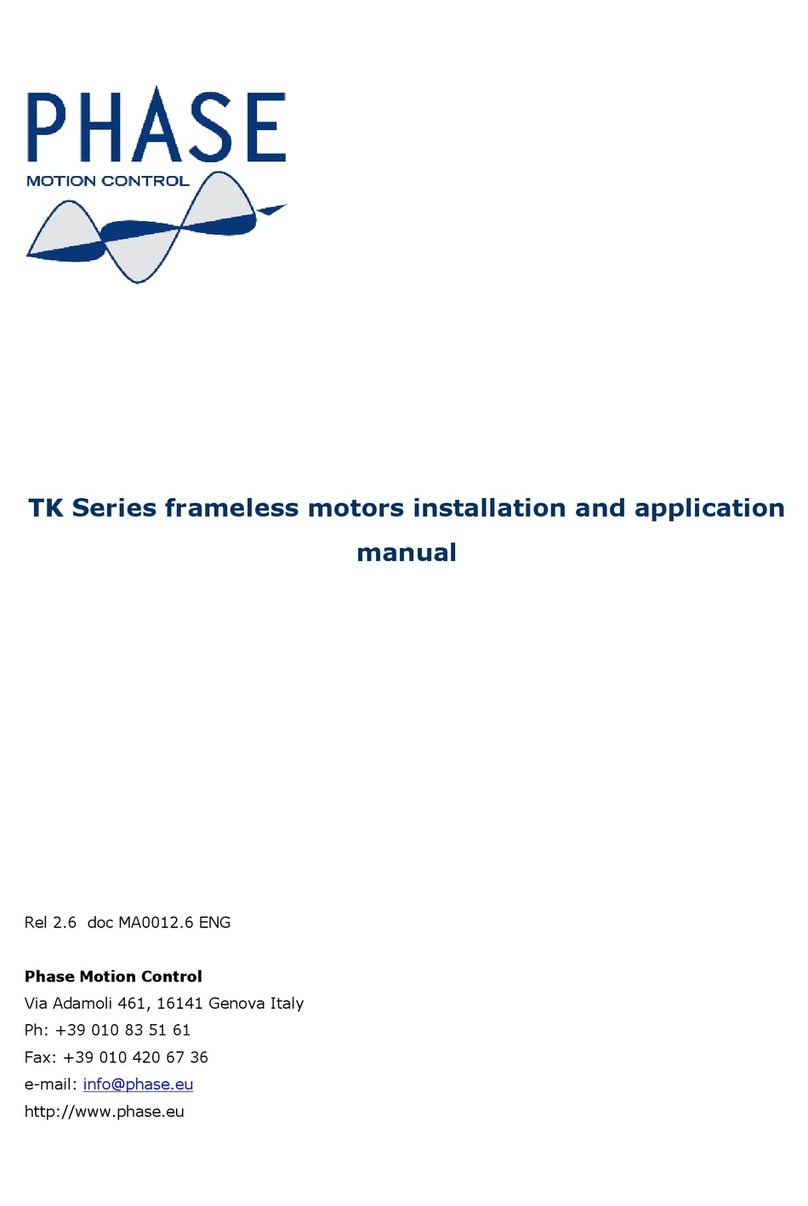
Phase
Phase TK Series Installation and application manual
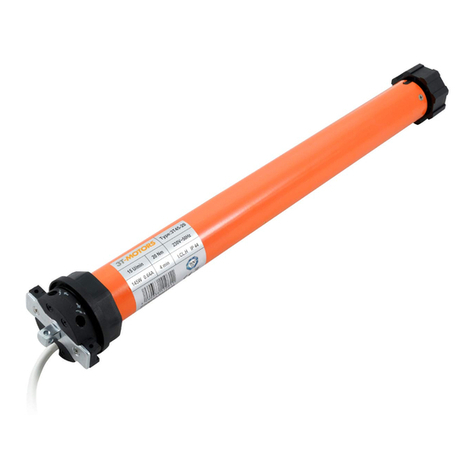
3T-Components
3T-Components 3T-MOTORS 3T45-20 Installation & operating instructions
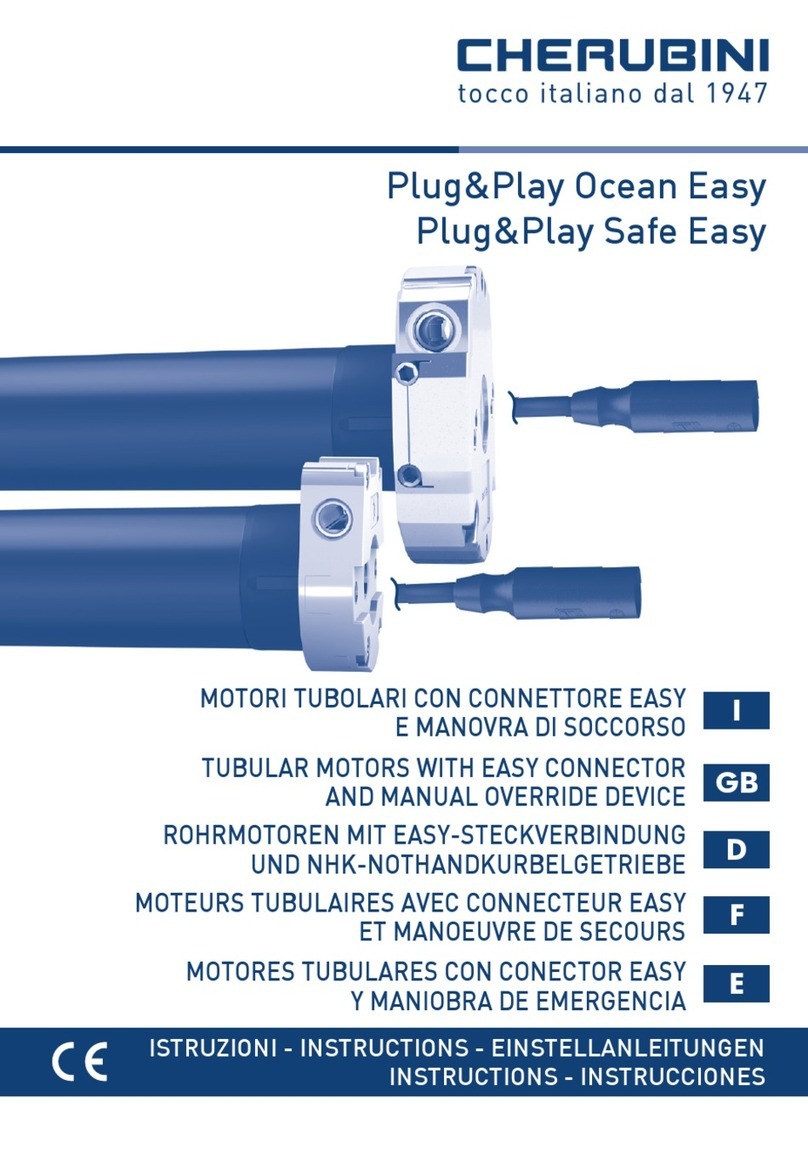
CHERUBINI
CHERUBINI Plug&Play Ocean Easy instructions
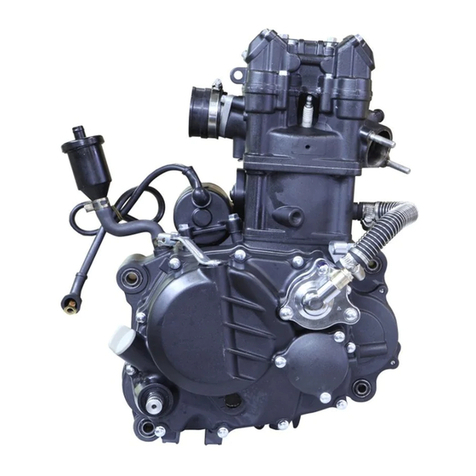
ZONGSHEN
ZONGSHEN CBS300 Maintenance manual
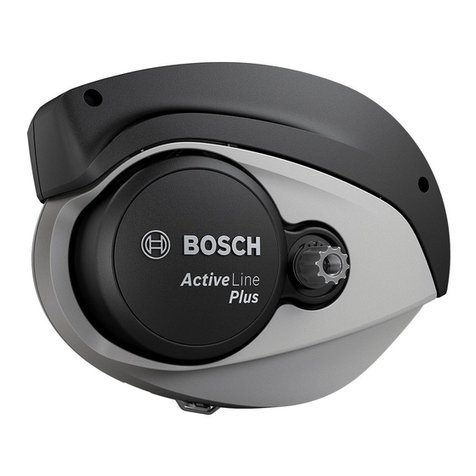
Bosch
Bosch Active Plus owner's manual
